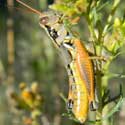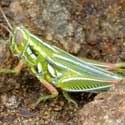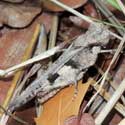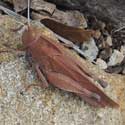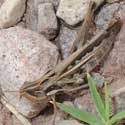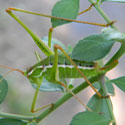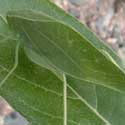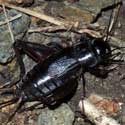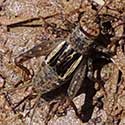Arid Lands Grasshopper
Well concealed grasshopper feeds often within shrubs. Yellow and gray with black markings. Flies well, More ...
Snakeweed Grasshopper
Can be bright green or else various shades into brown with white striping. Often associated with namesake shrub. More ...
Three-banded Grasshopper
Three dark bands on each lateral surface distinguish this pale gray hopper. More ...
Oak Leaf Grasshopper
Looks so much like a dead oak leaf that predators ignore this insect. More ...
Montezuma Grasshopper
Notice the slanted face and the patterns on the top of the thorax and just behind eyes. Base color is highly variable. More ...
Short-winged Katydid
Bright green with white lines/marks. Long hair-like antennae and strong jumping legs. More ...
Angle-winged Katydid
The color and texture camouflages this insect well when it sits on a sycamore leaf. More ...
Field Cricket
Nocturnal insect famous for males' chirping. A number of species possible in our riparian woodlands. More ...
Ground Cricket
Small, secretive crickets that inhabit cavities near the soil surface. More ...
